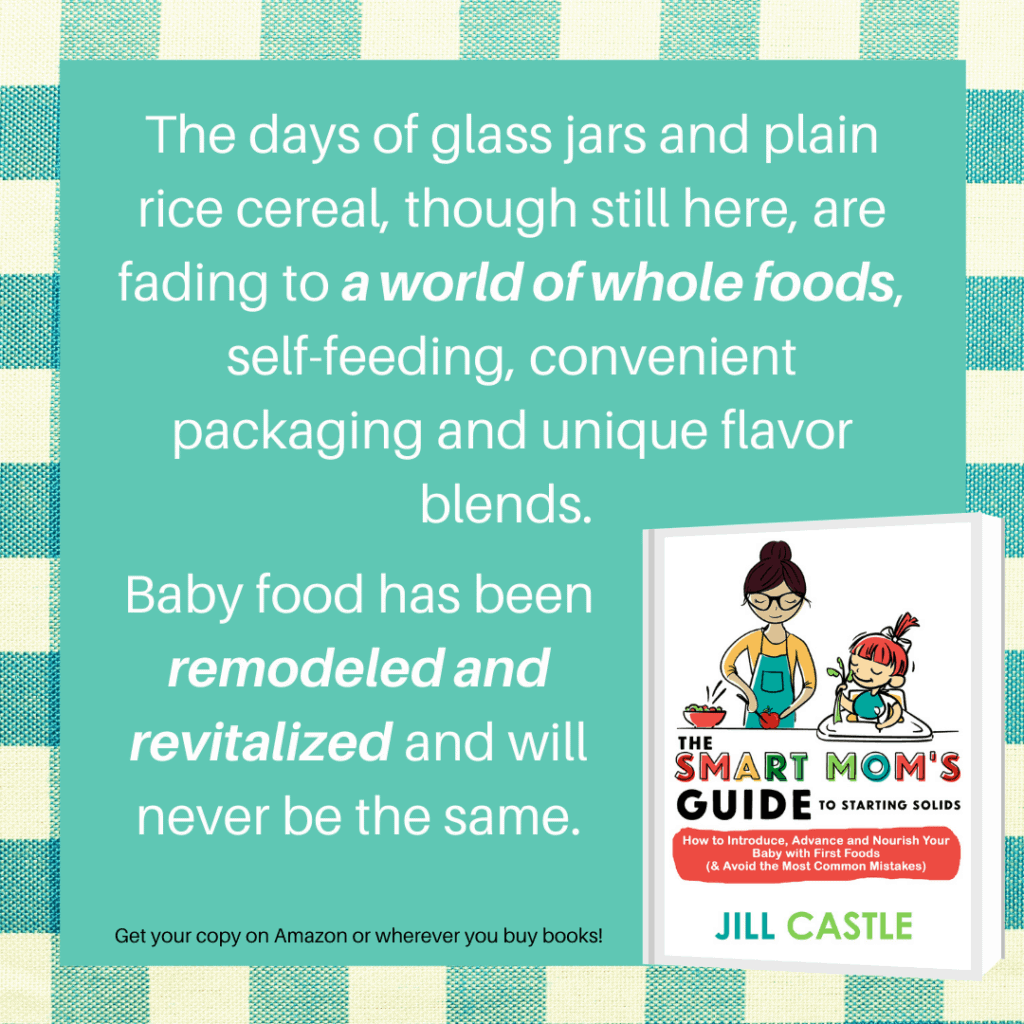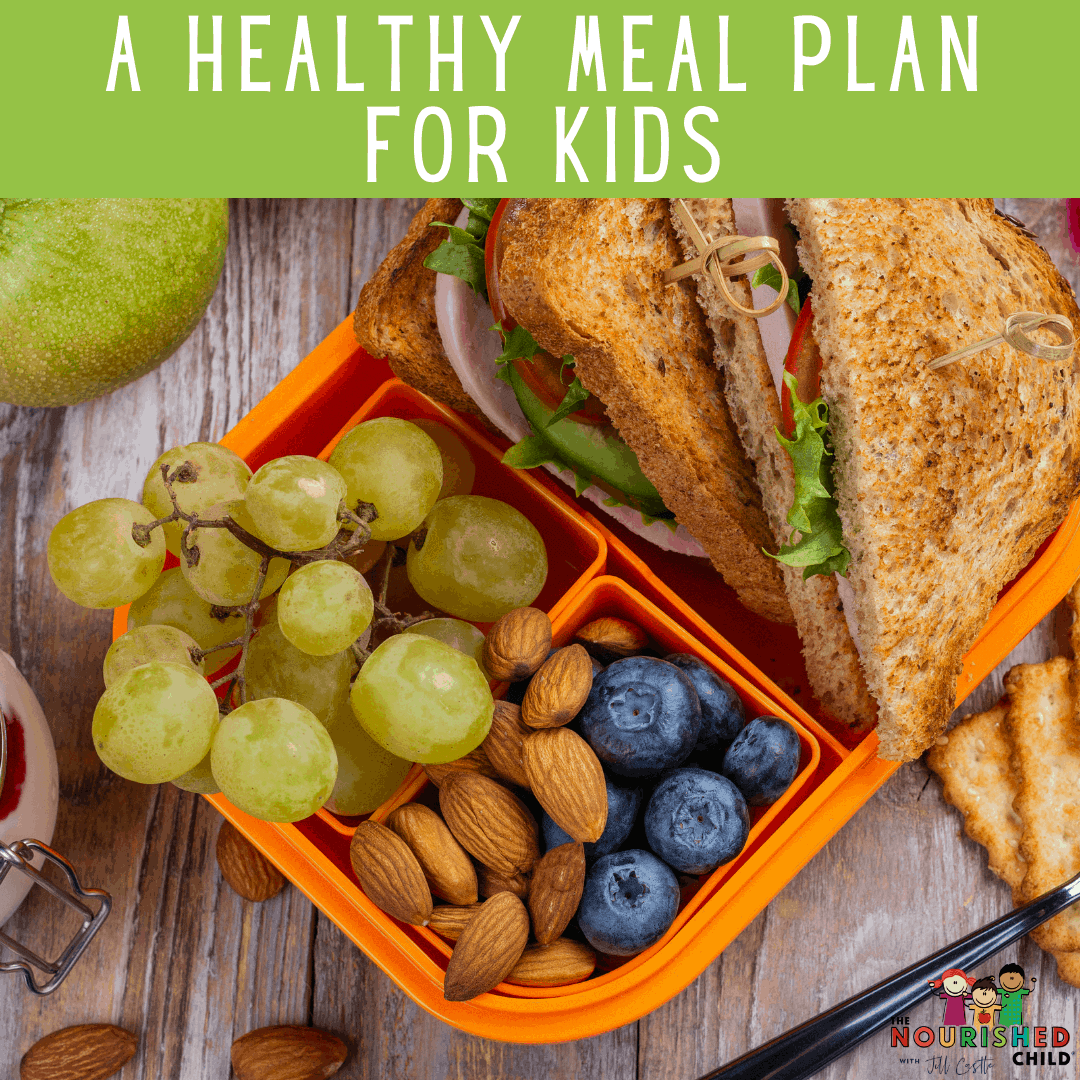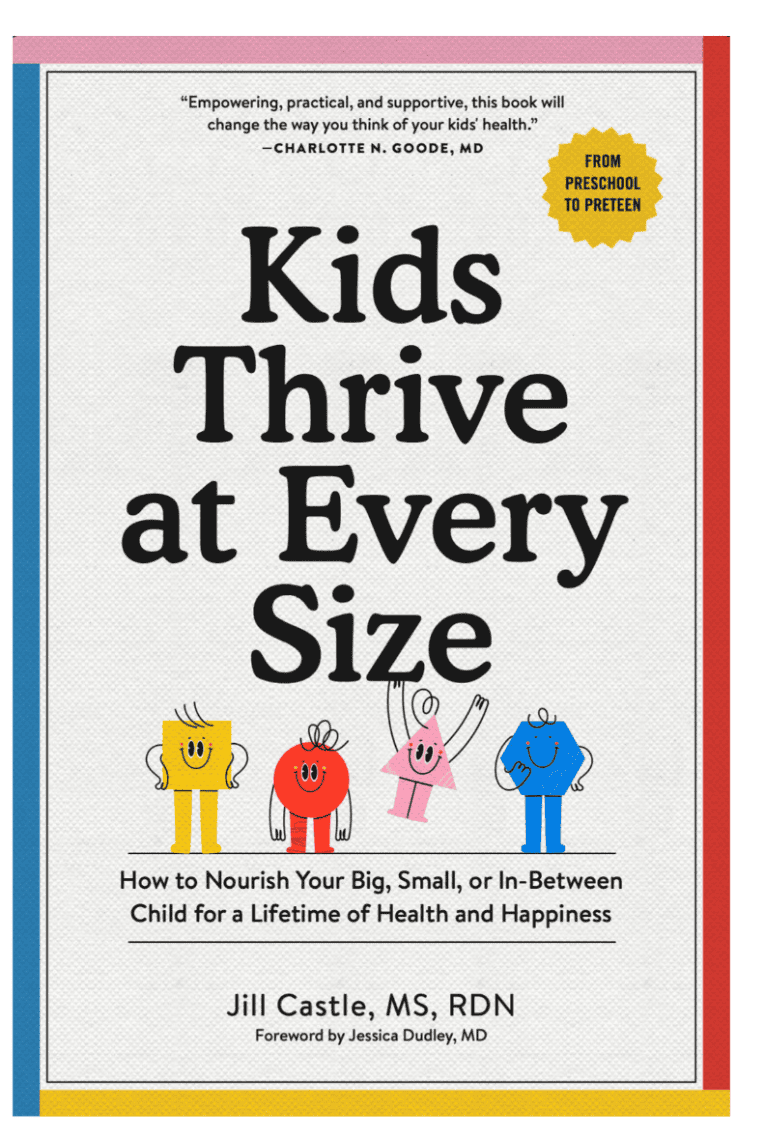Top 8 Baby Feeding Mistakes to Avoid in the First Year
June 3, 2023
Feeding your baby real food is an important step for all parents. Avoid these baby feeding mistakes, especially within the first year of life.
In the first year, starting solids, developing healthy food preferences, and learning to eat new foods are key milestones, so don’t let these common feeding mistakes slow your baby down.
Feeding your baby and the journey that goes with it is not always smooth-sailing, or easy. In my many years of working with new mothers as a pediatric dietitian nutritionist, I know that the decisions made in this first year are always made with good intentions. However, some decisions are made out of fear, hype, or lack of knowledge. As a result, feeding mistakes can be made and these may slow your baby’s abilities around self feeding, advancing to family food, and developing the joy of eating.

Why Baby Feeding Mistakes Happen
The quick pace of food transitions that babies go through in the first year is the reason for most baby feeding mistakes. In a period of 6 months, your baby will move from an all liquid diet – either breast milk or infant formula – to eating your family’s mealtime food.
That means the food transitions are fast. Once you get used to one thing, it’s time to move on to the next.
For example, say your baby masters eating pureed foods off the spoon. And now they want finger foods and seems unsatisfied with baby cereal and purees.
Another first year challenge is the variety of nutrients a baby needs in the first year of life. You’ve probably heard of the first 1,000 days (the period from conception to age two). During this time, growth and development in several areas is critical.
Key nutrients for brain development, bone growth, and sufficient calories and protein for weight gain and growth are top priorities.
Being mindful of these key nutrients for development, and fitting them all in can feel overwhelming.
Additionally, the repercussions of moving too slowly with food transitions or flavors can have its own set of ramifications.
For example, your baby may lose interest in baby rice cereal if they see it every day and at most meals. Or, your baby may tire of exploring solid foods if she isn’t progressively challenged with new textures and flavors. They may even end up preferring purees, baby food pouches, or get stuck on bottle feeding if they aren’t challenged with different food.
If you’re like most parents, you want to get the baby food stages right. From setting a reasonable baby feeding schedule to knowing when to start solids and make important baby food transitions, not only do you need to know what to do, you need to know what not to do, as well.
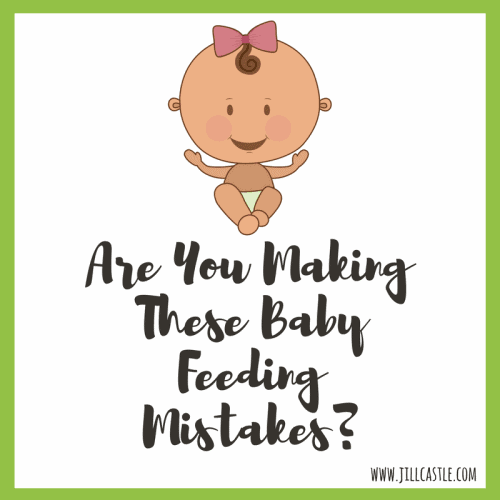
How Do I Know if I’m Making Mistakes?
If feeding your baby gives you a nagging feeling that things are getting off track or aren’t going as well as planned, you may be making some feeding mistakes.
For instance, some common signs of feeding mistakes include:
- baby isn’t gaining weight as predicted
- baby is struggling with the spoon or their motor skills and baby led weaning
- the transition to a balanced meal plan isn’t going as well as you had hoped
- baby doesn’t want to sit in the highchair
- baby refuses to eat
Your feeding style and approach may be contributing, especially if you’re using counterproductive feeding practices. Unfortunately, these can interfere with your baby’s eating, development, and food learning.
8 Feeding Mistakes Parents Want to Avoid in the First Year
In my line of work, I see several mistakes parents make when feeding their kids. It’s not that I look for trouble, it’s just that when parents are really struggling, they show up in my nutrition practice.
As a way to help you side-step some of these challenges, I’ve outlined the most common feeding mistakes I see parents make. Some are related to the process of feeding, while others involve food selection.
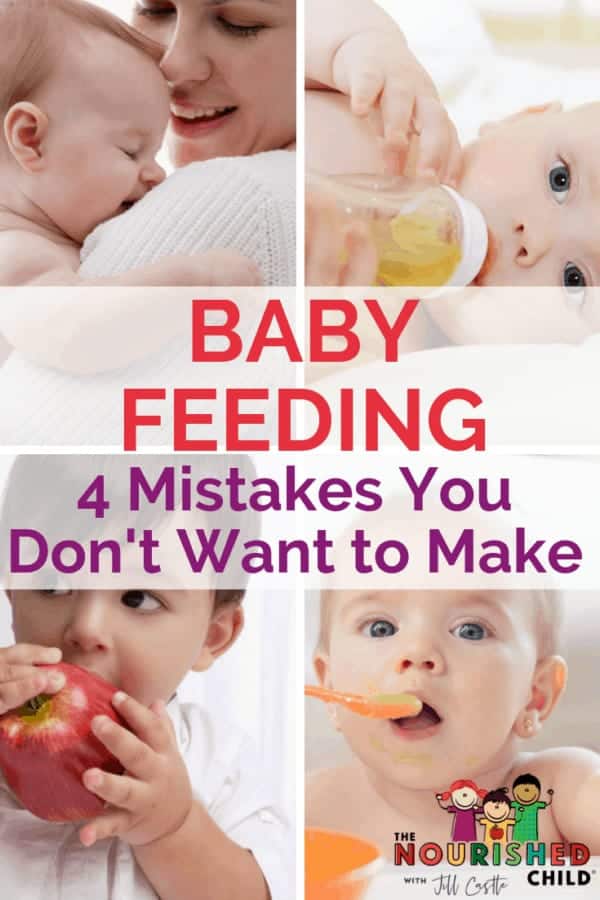
Mistake # 1: Keeping Baby Clean while Eating
In the quest to stay clean and tidy (and reduce the laundry load), you may be swiping your baby’s mouth with a washcloth after every bite, staying with spoon feeding (because it’s cleaner), or avoiding messy foods to cut down on the time and effort it takes to clean up after meal times.
Why is this a mistake? It robs your baby of important learning experiences, such as exposure to different textures, smelling food completely, and learning how to manipulate food using the hands and mouth.
Babies are in serious investigation mode during meal time, and there’s no better way to learn about food than to get down and dirty with it. Those pictures you see of babies covered head to toe in yogurt, spaghetti sauce, and cake? Yeah, that’s what I mean.
Case in Point:
Long ago, I taught one of my clients to let her baby self feed with a spoon. I asked her to refrain from using the washcloth until the end of the meal, and charged her with the task of offering her daughter more food variety. After implementing these interventions, both mom and baby started having a grand time with meals!
How to Keep Baby Clean While Eating
- Use the kitchen sink as a back-up bathtub. Stock the under-sink-area with towels, soap and plastic measuring spoons and cups so your baby can go from high chair to sink (with supervision, of course) for a quick clean up.
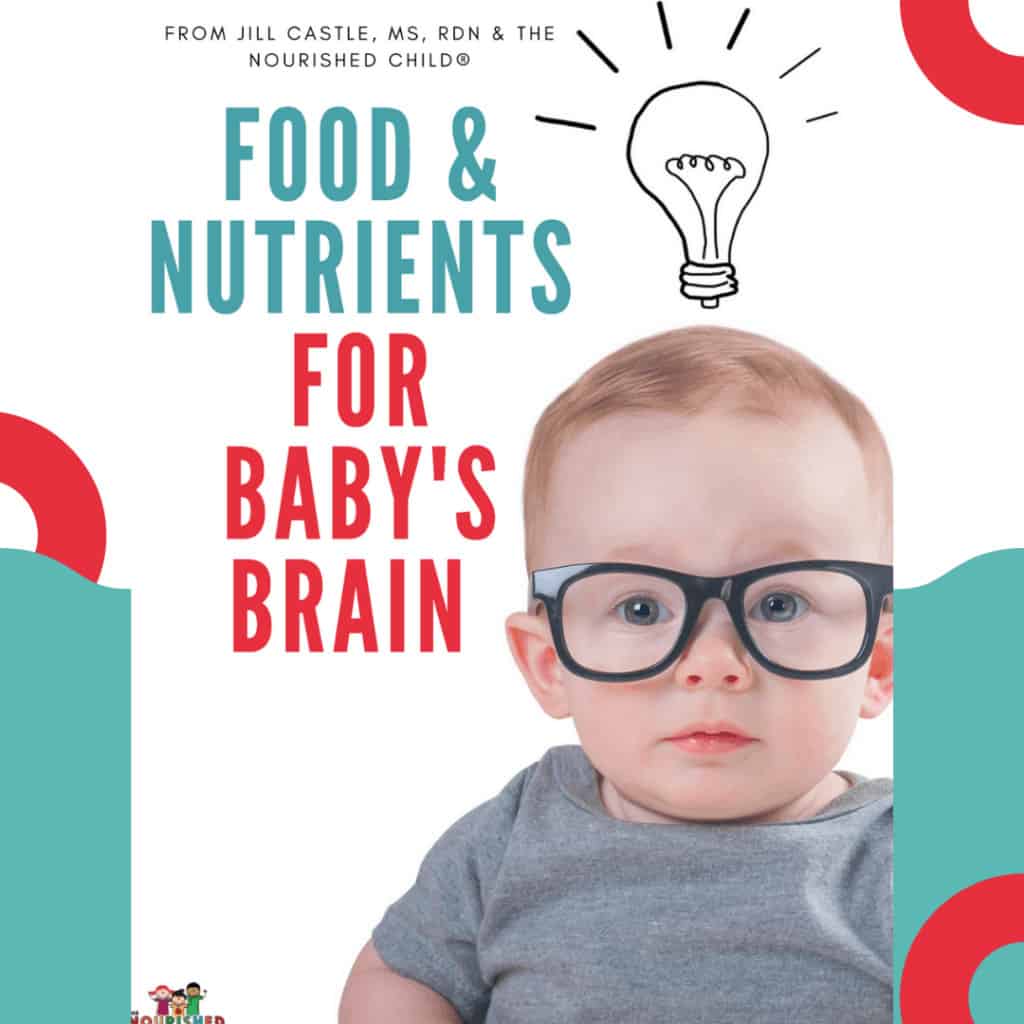
Get the Food & Nutrients for Baby’s Brain!
Mistake #2: Spoon-Feeding for Too Long
This ties into #1 as a way to keep a cap on the mess. But also, there may be a misconception that babies need to be spoon-fed for a year. Not true.
Babies can begin the transition to chopped table foods around 6 to 8 months of age. And if you’re a follower of baby led weaning, you know that solids can be introduced at 6 months when infants show signs of readiness.
By one year, your baby should be eating the family food, chopped or modified to baby’s skills with eating.
Your baby should also be using an open-top cup with small amounts of liquid so that spills are minimal.
Of course, follow your baby’s developmental progress and cues for readiness to see when the time is right to transition to more textured finger foods.
If you’re testing solid foods with a baby led weaning approach, be sure to read about iron and baby led weaning in this post or grab my up-to-date, step-by-step book called The Smart Mom’s Guide to Starting Solids. It includes advice for spoon-feeding, baby led weaning, and guidance for using both to optimize nutrients and self-regulation of eating.
When to Stop Spoon Feeding Baby
Most babies will want to start self feeding between 6 and 8 months. This usually coincides with the development of the pincer grasp and a good time to use the spoon less and offer finger foods.
Some parents are afraid to give up spoon-feeding but once you introduce table foods, you need to give your baby some independence, and let them learn and eat to their satisfaction.
Mistake #3: Offering Too Many “Healthy” Foods
I believe all babies should receive real, natural, unadulterated nutritious foods of different flavors, with an emphasis on lots of food variety. But I’m seeing a trend in feeding babies that emphasizes fruits, vegetables and whole grains exclusively. This can become a problem because babies have limited stomach capacity and these foods are filling.
Plus, when your baby’s tummy is full, there’s a risk of missing other important foods and nutrients such as choline and DHA. Whole grains, fruits and veggies also tend to be low in fat, which is an important nutrient for babies and their brain growth.
Certainly babies need these healthy foods, but they also need meat (or non-meat substitutes such as beans), fortified cereal, healthy fats and dairy (or fortified non-dairy) sources.
In fact, if I had the opportunity to re-write the food introduction guidelines for babies, I’d advise the following:
- Meat First (and other iron-rich foods because they’re full of iron, zinc, B vitamins, choline and other nutrients important for brain development.)
- Vegetables (because these are a learned taste and flavor and need more time and exposure for acceptance.)
- A variety of iron-fortified whole grains, fruit, and dairy products (or non-dairy alternatives if necessary, introduced as yogurt and cheese or as a baked in ingredient. (Note: no liquid milk until one year of age.)
Of course, there’s eggs, fish, peanuts, and nut butters — the top food allergens that need to be introduced before 12 months, too. My stance on “which foods first” is based on your baby’s nutrition, nutrient priorities, and their budding flavor palate.
[Read: How to Introduce Peanuts to Your Baby]
Case Study:
Josh, at 13 months, was eating a high fiber diet, filled with whole grain breads, lots of vegetables and fruits, and very little added fat. In fact, his mom stated, “I never thought to add fat to his meals—I thought that would be unhealthy.”
Josh’s diet appeared very healthy on paper, but in reality, it wasn’t meeting his nutritional needs. For example, babies need 40-50% of their total calories in the first year from fat. Josh certainly wasn’t getting this.
Once Josh’s mom understood that babies need a good amount of fat daily and where and how to get it, she was able to plan more appropriate meals for him.
The added benefit? With fat, foods (especially vegetables) are tastier and he ate better. Mom opened up to more variety (French toast, pancakes, sandwiches, etc—all cut up in bite-sized pieces) and Josh enjoyed eating again.
Mistake #4: Giving Baby Adult Foods
Just a little sip of my vanilla latte? Sure. A bite of my brownie? Why not! What’s the harm in this?
Nothing immediate, but over the long haul, you might find your little infant growing up to be a soda swigging, sweet treats loving kid if you’re not careful.
It’s true—what we offer babies now influences their taste preferences later on. Regarding sweets for babies, I suggest holding out until age two. The American Heart Association makes the same recommendation.
What about the one year birthday cake? It’s ok because it’s not a “regular” offering.
Remember those tiny tummies? They don’t give much leeway for foods with added sugar, and these may crowd out foods that offer important nutrients.
I also recommend holding off on caffeine, too. Babies don’t need a stimulant (aren’t we mostly trying to calm them down?!), nor do toddlers or children for that matter. There’s no place for caffeine in a baby’s diet—so avoid it.
Last, artificial sweeteners and colors fall into this category too. Try to limit them, especially for babies and young toddlers, even if “just one bite” seems harmless. The dosage relative to body weight is considerable. I’ve searched and searched, and there’s no upside to offering artificial food colors to young children.
Mistake #5: Being Too Rigid about How to Feed
The ‘mommy wars’ have been going on since baby-led weaning came on the scene. Spoon-feeding versus baby-led weaning has been the battle and it’s silly. Babies can be fed with a spoon and finger foods. The most important thing is that they are engaging in self-feeding. With the spoon, it’s called baby-led spoon feeding.
So, you do you. There’s no right way. If you want to do one or the other, fine. If you want to do a little of both, also fine.
My personal advice is to do a hybrid approach using both the spoon and BLW. All babies will eventually need to learn how to use the spoon and learn how to manipulate solid food and eat more complex forms and textures.
Mistake #6: Using Distractions to Get Your Baby to Eat
Since the invention of electronics – iPads, TVs, and iPhones – parents have used these to occupy their little ones while they eat. These are distractions. These disengage your baby from their internal appetite cues and promote mindless eating, setting a child up for having difficulties with appetite regulation down the road.
Instead, sit with your little one and enjoy the meal together. It’s not necessarily a bad thing to let your baby have a toy or book while eating, but don’t make this a habit.
Mistake #7: Isolating Your Baby at Mealtimes
Some babies are relegated to the corner of the kitchen, alone in their highchair, for their meals and snacks. I often ask my families, “How would it feel to sit on a chair in the middle of the room by yourself and eat your dinner?”
Mealtime is a golden opportunity to socialize your baby. Pull the highchair up to the family table at mealtimes and include them in the activity and conversation. There’s a lot of learning that will happen, including watching siblings and adults eat, watching how to converse with others, and building community within the family.
Mistake #8: Failing to Recognize Hunger Cues and Fullness
Babies have a built-in appetite regulation system that tells them when to eat and when to stop. But they need a supportive adult around to watch for these signals and honor them, starting a meal when baby is hungry, or stopping it when baby is done eating.
The only way you can recognize your baby’s appetite cues is if you are there with them during mealtime.
Moving Forward
If you’ve made any of the above baby feeding mistakes, don’t beat yourself up! Just take a step forward and make the adjustments you need to feed your baby well and with confidence. That’s the quickest way to encourage baby self feeding and move through the feeding and eating milestones.
More Resources
- My book, The Smart Mom’s Guide to Starting Solids is a quick read that cuts through the fluff and gives you exactly what you need to know to feed your baby in the first year. A baby feeding schedule, baby feeding chart, baby food stages, baby food chart, when to start solids, and more!
- Check out our workshops, classes and guidebooks. And read, The Ultimate Guide to Baby’s Nutrition in the First Year.
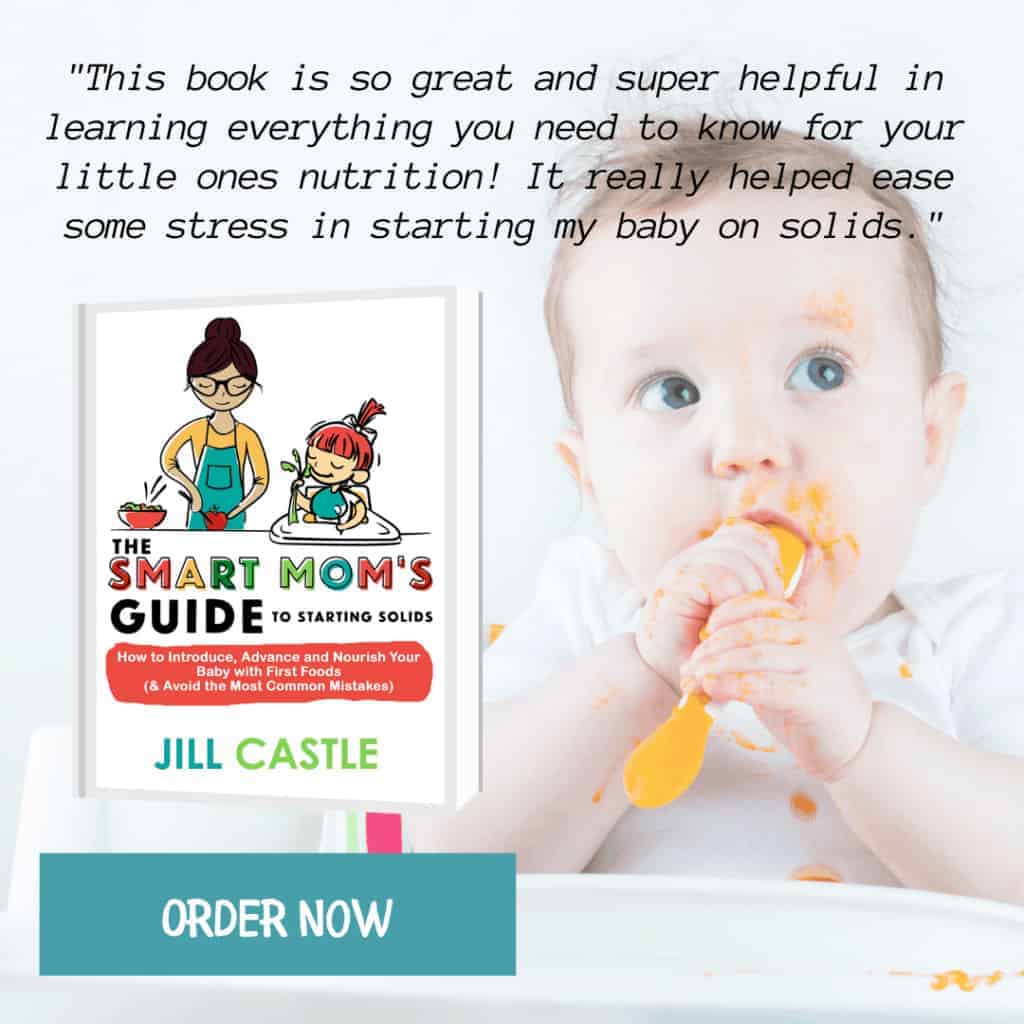
Grab your copy today!
More Questions About Feeding Baby
Here are some frequently asked questions about feeding babies:
My Baby Won’t Feed Himself Finger Foods – What Should I Do?
Sometimes babies are less interested in feeding themselves, especially when they’ve become used to mom or dad doing the heaving lifting. The best way to help when your baby won’t feed himself is to be hands-off yourself. Offer foods at mealtime in age-appropriate shapes and sizes and let your baby explore these on his own.
You may have to show your baby how to pick up and hold food, and model bringing it to your mouth at first. If your baby’s disinterest stems from a sensitivity to the sensory aspects of food, then begin to engage your child with non-food sensory activities, and mention this to your pediatrician so you can get support for your little one early, if needed.
When Do Babies Feed Themselves?
Around 6 months of age, babies can begin to feed themselves, but you may have to model what this looks like for them.
Start with a dab of puree on your baby’s fingertip and guide the hand to their mouth, placing the food on baby’s lips. It won’t take much time before your little one learns to bring his hand to mouth on his own. You can use this same technique with a baby led approach, using strips or large pieces of food your baby can hold in their hand.
Always be present when your baby is self-feeding, so you can intervene if they put too much food in their mouth, or need assistance.
This post was updated April 2024 from its original.

Jill Castle, MS, RD
I like empowering parents to help their children and teens thrive at every size with realistic advice centered on healthful habits around food, feeding, nutrition and health behaviors. As a pediatric dietitian and author, my goal is to share strategies and realistic advice to help you raise a healthy and happy child through my articles and podcast.

